The Real Market with Chris Rising – Ep. 88 Geoff Arrobio
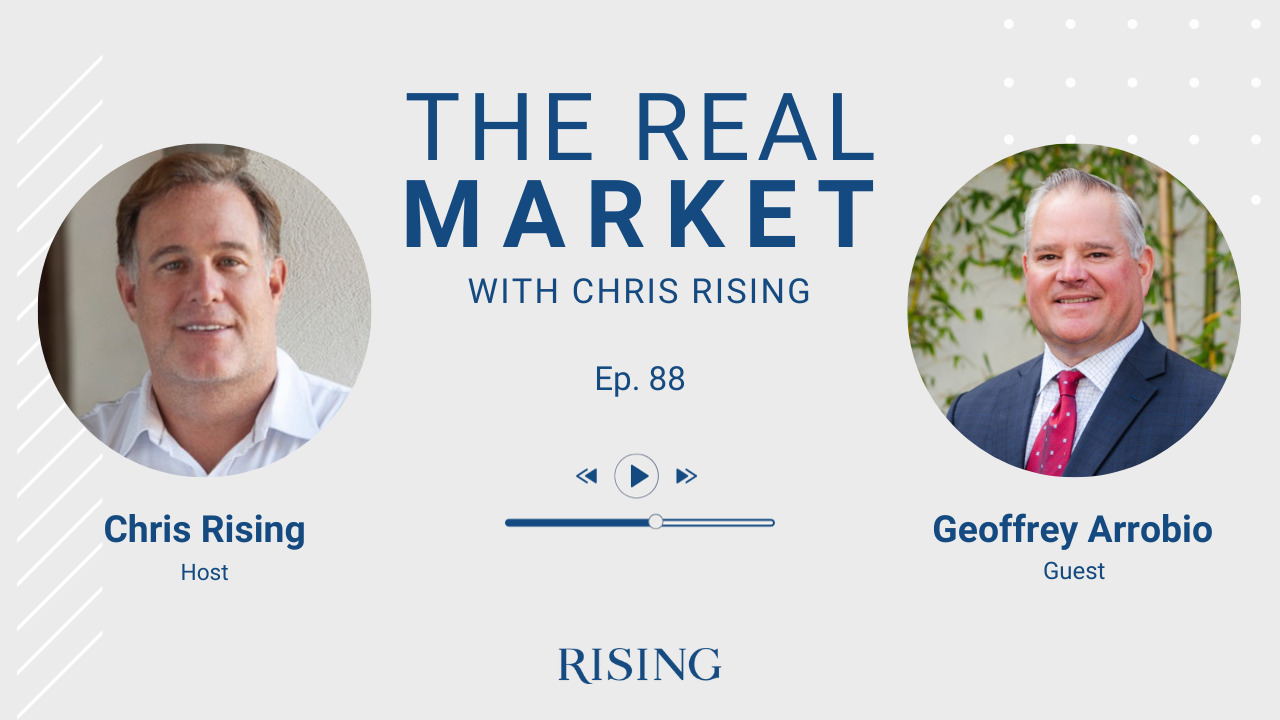
00:01
Welcome to The Real Market with Chris Rising, the only podcast that brings the real estate conference panel to your headphones. You’ll hear from superstars from every realm of commercial real estate, the biggest brokers, the most well-known architects, the largest investors, and the most visionary developers. Learn what they do, how they do it, and what drives their success. We’ll discuss the latest trends across regional markets, capital flows, both national and global. And we’ll explore technology’s role in shaping all of them.
00:31
We’ll take a clear-eyed look at where we’ve been, where we are now, and what’s to come. Real conversations. Real experts. Real insights. This is the real market.
00:50
Welcome to Real Market. Excited to have Geoff Arrobio here with me today. Geoff is with Matthews Real Estate Investment Services. He’s been in the business for quite a long time. He and I have known each other for even longer. I don’t think I want to admit how long, but we both didn’t have any gray in our hair and we actually probably had 70s perms going at the time, I think. Pretty close, yeah. We’ve been friends a long time and I’ve watched Geoff’s career going from when he started at Immunity Bank, I think it was, in Pasadena.
01:20
working his way through several gigs and several cycles. So Geoff, welcome to The Real Market. I really appreciate the time and glad to be here. And let’s talk about some real estate and some other aspects of what’s going on in today’s market. Look forward to it. Well, let’s start with, because Matthews is a rather new name on the scene here. I mean, a lot of people are familiar with the old Johnson Capital and obviously Walker Dunlap, but there are other names out there that are competitors like JLL or Marcus and Millichap.
01:48
Why don’t you tell us a little bit? I mean, I think what most people know about Matthews is that Kyle Matthews is very aggressive in his marketing and his podcast and things like that. But I don’t know if anybody in the world of my audience really knows the capabilities of Matthews. So why don’t you start, why don’t we start there? No problem. I’d be happy to. So Matthews was started by Kyle in 2015 out of El Segundo.
02:09
Kyle used to work for Marcus and Millichap and he branched out and started his own firm called Matthews Real Estate Investment Services, primarily as a broker for the sales side, representing clients for sales via multifamily or retail or industrial, et cetera. And since 2015, he’s been on a terror building out his platform nationwide. And so there are 19 offices nationwide currently coast to coast, over 600 brokers. He
02:38
added the mortgage banking side or capital market side, if you will, to Matthews. About two years ago, Cliff Karnes was put in charge to develop that platform to assist in two ways. One is to assist the sales side of the business to put together acquisition financing or refinancing structures for clients, and then to also build out some legacy financing structures, be it tailing to construction needs for clients on all asset classes.
03:06
bridge financing, permanent financing. So we’re really building out the capital market side of the business and touching all the major asset classes out there. And we’re about 25 people so far, and we’re looking for good talent and hard charging people that can use the technology within the firm and leverage that with the relationships that they’re creating as they move forward in this marketplace. So they do about three to $4 billion in sales. I think they’ll probably a little bit more than that.
03:32
Again, I’m on the capital market side, so not really in tune as to how much they’re actually doing, but they do quite a bit of business. Their market segment is between $2 million up to about 30 to $40 million. So more of the smaller, big market sizes. That platform is going to grow over time. We’re trying to reinvest into the company in terms of reinvesting the people and technology in this period of time.
03:59
that to capture additional talented people to build out the platform and grow during a tough time in the market. Well, I would say I had a brief chance to meet Kyle recently and he certainly brings a presence. He seems like a very strong leader. But what I was really impressed with was the people he had around him were on his team. I mean, quite frankly, it kind of reminded me of the old Cushman days where these are just hard charging, work your tail off kind of people.
04:26
And so I was pretty impressed. He did say that the focus right now is in a bad market. It’s a good time to give people an opportunity. And on the capital market side, he said that’s something that they’re very focused on. And, you know, asked me for some names and all, but he was really proud that you had joined him. And I think with you there and some of the people he’s put together, I think it’s a real opportunity to grow. Yeah, I mean, one of the only gray hair guys, I guess, in the firm, which lends itself to…
04:50
I do get asked a lot of questions from some of the younger folk and part of the whole culture is to teach some of the younger brokers how the business works. Not only based on lender knowledge, underwriting knowledge, but relationships. A lot of these younger guys are coming out of college. They go through a Matthews University, which is pretty interesting. As you said, kind of what Cushman used to do back in the day, you know, coat and tie, black shoes, looking good, learning how to…
05:18
communicate over the phone or through Zoom, go to meetings face to face, which is really important, especially in this business, it’s still a relationship business, and then teaching them how to really do the blocking and tackling of this business, which is understanding your market, understanding your asset class and underwriting, and then executing. So it’s been kind of a breath of fresh air coming from some major firms out there to more of an entrepreneurial firm where I can actually
05:47
touch base with a lot of different not only brokers, but asset classes. Um, can I have experience in all of them, which was great. And, uh, I don’t specialize in just one asset class. I do all the asset classes, uh, from soup to nuts when it comes to construction, all the way through the life cycle, uh, financing or sale. So it’s kind of fun, hard charging group and a lot of energy. And, uh, it’s been great so far. So on that kind of two to 20 or two to $40 million sale.
06:16
there’s a lot there that would fall into Fannie and Freddie, all that kind of stuff. Is Matthew’s license, can do all those kinds of deals or where are you guys in the cycle of doing that? So we’re not licensed yet, that does take some time to do. We are aligned with agency DOS sources and Freddie Mac seller servicers on a direct basis. So if there are agency business that comes in or multifamily deals that come in, we can execute either on the agency side.
06:45
life insurance companies side, we’re really building out our life insurance company correspondency systems and servicing. That’s something that we’re building out currently with the likes of Symetra and Stancor and Narotos and some of the other small life insurance companies. Whereas some of the larger life insurance companies are kind of open to everybody. But for SPL, for Fannie Freddie SPL, we have direct sources too, which doesn’t add cost actually to the transaction.
07:14
And then for larger main plate, Fanny and Freddie Deals or even the HUD, we have that execution ability as well. So it’s pretty seamless and we have good execution on those fronts, so yeah. So what I find interesting about what you and Kyle and the team are trying to do, obviously there’s a desire just to be successful and build things, but I really got the sense that there’s a desire to build a culture that is about succeeding. It’s not about trying to be everything to everybody.
07:42
It’s not trying to make sure, you know, we’ve got this program going here and that program for culture and it’s about, Hey, we represent clients and right now it’s really hard to get debt and it’s not just for the buyers, the sellers want to know that if you’re going to bring them a buyer that you’re able to get them dead. So when you’re looking today, what you think is a competitive advantage for Matthews, if you’re partying with a go get them kind of sales broker.
08:10
Give everybody the pitch. I want two pitches. The first is to the client of why they should be hired. And the second is to the young talent out there, why you guys are doing it different. Well, I think what we do as a firm on the capital market side is really clear the market, right? So if there’s a multifamily deal that it’s in Southern California that’s for sale, we will analyze that deal upfront and make sure we look at all the aspects of it from.
08:39
current rents, performance and so forth and expenses and clear that market, meaning we will make sure that we touch base to every lending source out there that’s currently in the market. A lot of them are not in the market, but, you know, obviously the agency sources, the life insurance companies, the credit unions and so forth and give them, you know, basically a menu of options with regards to how that deal can be executed. So it’s really knowing your asset class, but also your lending sources. We can definitely do that.
09:09
For the young heart charging guys out there, you know, we do work extremely hard. I mean, kids come in, some of them are fresh out of college, go through the Matthews University process, and you have to have good work ethic when you work here. Some of these kids are coming in even during the weekends and really learning the business. Some of them are making 500 calls a week. So they get to learn how to communicate, but also you get knocked down a couple of notches. And that’s not a bad thing. That builds character. It builds tenacity.
09:39
And that’s what Kyle’s we’re looking for is people that don’t mind getting knocked out. We all played football and you play football. I did too. And so the Kyle, you know, getting knocked down and getting yourself back up is part of a character and not getting too disgruntled and knowing that, Hey, if I keep doing this long enough, there is going to be light at the end of the tunnel. And I’m going to create those relationships, be it with lending sources and with clients. That’s, I think, embedded into this company is that, Hey,
10:08
You get knocked down, get wrapped back up, get back on that horse and keep going. Because at the end of the day, you’re going to find those successes if you have that tenacity. So, um, and as tough as things are, this is when the opportunity for the new shop, right? You know, because somebody hired CB and, oh, I’ve always hired CB and now CB can’t execute it. I’m not trying to slam CB or JLL. I’m just saying this is the time when there’s a fracture in relationships because it’s tough and a younger, it doesn’t have to be younger. I don’t mean that, but I mean,
10:37
a new view on how you get things done. To me, it’s opportunity. And I guess you and I have been through, I think this is our third full one, maybe our fourth, since we kind of knew what real estate was. Right. And it’s the people who just keep fighting and don’t give up who come back. And then when the cycle is good, make a good amount of money and cycles bad, they’ve earned their spurs and they’re getting through it. And this is a long game. This is not a short game. I think, you know, for the younger brokers out there who are interested in this business.
11:05
You have to think of it as a long-term game. You can’t think of it as, hey, I need to make my next commission and, you know, I’m going to make do shortcuts and just to get this deal done and then, and move on. That’s how you lose relationships. That’s not how you garner relationships. And those who were actually being advisors to clients, even if it may be a transaction that doesn’t make sense. And you say, you know what? This is probably not your best interest at this point in time. Let’s wait for a better day.
11:34
That’s advice and that garners trust with you and your client. You have their best interests in mind. It’s not just transactional. So I think it’s lost in this business a lot where it’s just, I got to make money, you got to make money, you got to make money. Whereas, no, you need to be an advisor first and know what your end users goals are. You got to keep their goals in your mind and add value to that. Right? Any way you can with your market knowledge and lending knowledge and deal structure.
12:03
And that does this takes time. It doesn’t happen overnight. And so patience, long game and always learning. I mean, you can always be learning something and picking up periodicals, understanding economics and the reasons why things are happening. So you sound, you have that knowledge and you can pass it on your client base. I think that’s very important in this marketplace. I know on the sales side, Kyle talks a lot about technology on the capital market side, you guys.
12:32
it’s more of a relationship. You can’t just use some technology and all of a sudden you’ve got an insurance company who’s ready to make a loan. But when you look at what Matthew’s on a day-to-day basis, what its culture is, I mean, it’s looking sharp, that’s for sure. I mean, Kyle always looks like a chameleon box when he’s out there. But it’s also like, what is it for a young person that would be gravitate towards on a day-to-day basis that maybe some of the older, stodgier, bigger international firms don’t have?
13:00
I think when you walk into a Matthews office, it kind of takes me back to my, I used to work at Bear Stearns right out of college on a trading floor. And Matthews has that kind of similar vibe where there’s a lot of collaboration between seasoned veterans, I guess you’d say, and the younger groups. Doors are always open. It’s very collaborative and there’s a lot of energy within each office, which is really cool.
13:28
companies that everyone has their door closed, right? So that’s not the vibe here at all. It’s very collaborative. There’s no dumb question. And if you don’t know something, ask someone who knows it, right? So, you know, lending sources are open commodity within our firm. So we share the knowledge, if you will, back and forth, who’s doing what, how, why, when, and on the sales side, it’s the same thing. Like, hey, you’re working on this type of asset class.
13:57
How would I structure this? And so they’re always learning, which is great because it’s very collaborative. That’s great. And I say this out of admiration, it’s not a place where you’re just gonna work 38 hours a week and have any success. And the bottom line is if you wanna make wealth in your life, that’s the reality. You gotta put the time in. Everything, you gotta earn your chops. I mean, I’ve said that for years and it’s a slow process. It takes time. But once you get over that hump and you put in your…
14:25
couple thousand hours, right? And you start understanding the full picture of how things actually work and are structured. And then you start seeing success and then you just wanna capitalize on that and keep going. So it’s a fun firm, high energy, smart guys, go-getters, and I’m happy to be a part of it. Terrific. Well, let’s get into the real meat here. I’m gonna set up.
14:50
talking about where we are in the market today and a story I heard two days ago at a YPO real estate round table. A friend of ours, mutual friend of ours, was telling the group that he owns Entitled Dirt in a major industrial market, got a 10-year lease from a company that everybody here would know who it’s from, who it is, and knows the global credit and all of that, could not get financing that the lease would pay for. He would lose money.
15:19
because the lease rate is the lease rate. He said he’s getting quoted to build a manufacturing industrial building anywhere from nine, five to 10, eight percent on a construction loan. Yeah. You just go, what world are we living in when a credit tenant with somebody who owns the land free and clear with entitlements, and all they need is the construction loan to get this thing built and bring all these jobs, and it’s just where the world is right now.
15:47
October 25th, 2023, it’s not feasible. What is going on in the world? Well, I’m having a lot of those conversations with clients today. In this case, it’s industrial. I’m having the same conversations on multifamily and other asset classes. Well, what you have currently is obviously the Fed has raised rates 500 basis points. 500 basis points over the last
16:16
couple quarters and has really backed up what we use for our index for pricing construction financing, which is either so for or prime rate. But since we’ve had SBB and Signature Bank go under or taken under, if you will, there’s a run. Yeah, exactly. A digital run on the bank with Peter Thiel telling all his friends to get your money out of SBB.
16:43
So you’ve had, and we can get into that if you want as well, and the reasons why, but you’ve had a big backup in construction lending in terms of its cost. And with that, not only the cost of that, the price of that capital has gone way up, the underwriting to that capital with regards to loan to cost, depository relationships, because most banks are gonna want deposits now on construction loan, at least 10 to 20% of the construction loan needs to be in deposits.
17:13
Global cash flows or tantamount, all the lenders are looking at their global cash flows, obviously credit worthiness and so forth. You’re having a lot of people put pencils down because it just doesn’t underwrite. And they’re either putting pencils down and waiting for the next couple quarters to see where things shake out or the alternative is to go to private debt funds. Now the cost of private debt funds are going to be somewhat similar in terms of its pricing.
17:42
maybe a little bit more, but I think the advantage that they have is they, since they’re not a non-regulated fund or funds, they can get a little bit higher on the leverage scale. So rather than a typical bank is going to be in the 55 to maybe, maybe 65% loaner class in the higher end, it’s for your type of deal, potentially, not knowing what the credit is. But a debt fund may be able to push that leverage up to, you know, another 5 to 10% potentially.
18:11
but that cost is going to be relatively the same all of them more. That’s just the world we live in right now until things. You wonder if lenders start saying, hey, I’ll do it so that it makes sense if you give me a participation or something. You know, really in that world. You also have on the fixed rate side of things, you do have a lot of institutions did this in the first couple of quarters, where they were coming out of floating rate debt and they wanted to fix it, and they basically done a lot of rate buy down.
18:40
So we’ve done that. They paid a couple of points and instead of barring at a 7% coupon, they’re back down in the low sixes, which makes the cash flow work on a debt service basis and they can get the first. We just looked at it as though we’re just using more equity. Yeah, exactly. We’re just, instead of being 60% LTV, it’s a 52 and that 8% is buying us a lower rate. Over the long run, you make it back up, right? And so it’s not a bad way to look at it. Now,
19:08
We’re still in a rising interest rate environment. I would argue that the 10 year being where it is, what’s gone down a little bit, but above five, is though they added 50 more bips to the Fed funds rate. I mean, it’s got the same effect. Yes, it does. And spreads, when you chop up the market, at least this is what I do in my mind, is that you’ve got spreads for construction, you have spreads for permanent financing, and in the permanent financing world, you’ve got life insurance company spreads, you’ve got…
19:35
credit union, if you will, spreads, bank spreads, and then CNBS. And that’s the CNBS side is completely blown out. And the life insurance company side on perm financing is the most competitive so far. But again, they’re gonna be pretty conservative and they’re underwriting and still gonna require, some not depository relationships at all, but credit worthiness of that client and that credit to garner those spreads. So.
20:02
I’ll interrupt real quick because one thing about with the insurance companies is we are at October 25th. And so a lot of these insurance companies are pretty near their allocation. They’ve already done it. So it’s a lot easier for them to say, hey, we’re out of the market for two months and we’ll see you in January. A lot of them will sign up deals today for execution next year. But I’m talking about trying to close some of them by year end.
20:23
And most life insurance companies get new allocations, you know, at the end of January, beginning of February. And I’ve had those conversations with a couple of different groups so far, actually this week, and they’re not quite sure where they’re going to be. They’re going to be in the marketplace because they need to offset their liabilities with assets and so forth with with consumer real estate debt. So that will occur. But, you know, the underwriting has become extremely tough, especially for the office sector, which is an anomaly, an issue. And a lot of life insurance companies are.
20:52
We’re just saying, you know, we don’t want to see an office, even medical office. Some of them are saying, hey, it just it goes against our current credit format. We can’t even do a credit medical office deal. Wow. They’re back to work. People are going to see the dentist and the doctor. That even can’t get financed. So that asset class, I mean, as an asset class, I think medical of all. I mean, of all office product, I think is extremely well. Those medical tenants pay their pay their rent on time.
21:20
those often if you’ve been into a medical office lately, they’re always packed. I mean, there are people that need those services. So I think that is one of the better asset classes out there rather than, you know, downtown CBD or, you know, maybe suburban. But the MOBs have done very pretty well. So let’s take this in another direction, just talking about why we’re here. You know, there’s the.
21:46
kind of Bill Ackman, Ray Dalio point of view that we have an inverted curve because we have profligate spending by both parties or $2 trillion in excess debt this year, just on our fiscal budget year for the federal government. And because of that large S, we’re gonna see interest rates high for a long time. There’s another group of people out there who feel like interest rates are gonna start coming down on the next event, like, you know.
22:14
Israel Hamas was just the beginning. We’re going to have a few more of these and the world’s going to panic and interest rates are going to come down. Obviously for your business, it doesn’t matter where they are. You’re going to get the best deal for your client. But personally, which camp do you get in? Do you think we’re going to have lower interest rates in the next year or two? Or are we going to be longer forever or higher forever? That’s a really good question. And let me try to answer that. I’m in the camp where it’s very difficult for
22:41
government at 120% of debt to GDP to lower rates unless you’re really going to start the money printer again. And that may be what happens at the end of the day. What triggers that money printing event, everyone wants lower rates, right? So, but what triggers that money printing event is either a black swan event or some major breakage. You know, I don’t really think it’s more of an inflationary component today. I think it’s more of a fiscal policy issue today where
23:10
We have so much that it’s very difficult to service. I mean, if you look at, you know, the RGDP, you know, third of it is going to interest payments and then you’ve got Medicare and then you have defense. So a lot of that is taken up already and then you have every other program after that. I think the Fed is in a box. That’s the kind of camp I’m in. And I don’t believe in the complete soft landing metaphor. Hawk, I think there’s going to be some reckoning here. We’ve had free money for 10 years.
23:39
and now we’re at 5%. And if you look at 15 years ago, 5% is normal, right? I think 0% was unnormal and an anomaly, but we’ve had it for so long. And so you have clients that are based on that 0%, which we’re probably not going to go back to unless there’s major, major issues here where they have to do some emergency cutting. Does that affect the long end of the bond, even if they do cut immediately? I don’t think it really does. I think the treasuries because of
24:09
the leverage they have currently and the outstanding paper they have to refinance over time, is going to stay kind of close to where it is. Maybe it goes down to a four or whatever during a black swan event. But I also think that my concern going forward is a liquidity event, meaning, you know, we do have all this debt that needs to be repriced. You’ve got junk bond yield, junk bonds that need to be repriced, corporates, and then you’ve got treasury. That’s a lot of paper.
24:36
to refinance over the next 18 months. And that’s gonna soak up a lot of liquidity. That’s more my concern is liquidity issues than it is, of course, the deficit is another issue, but I think that’s where things are gonna get other interesting, I’d say at least. And then the additional point of that is that the CRE debt. I mean, you have banks that are holding on a lot of CRE debt currently, and the regulators have come into most of these institutions and basically said, listen,
25:04
I was actually reading it yesterday, the Treasury put out a bulletin yesterday with regards to Lend and Extend on troubled notes. And I think that has a finite life to it, meaning I think by summer of next year, you’re going to see some of that paper unravel and come to market. I don’t think the big banks don’t want to be the first ones out there and put their toe in the water and say, hey, we’re going to make the market here. And because that would that would adjust everyone else’s book. And so that’s why they’re doing this, the Lend and Extend.
25:34
kind of programming, but I think that will come to fruition sometime next year, which is going to create opportunity. I mean, it really creates opportunity. I agree, but I think it’s going to be such a massive issue that we’re going to have to have another TARP or something like that. We’re going to have to have the government partner with private. And that means the Blackstones and the Oak Trees are going to make all the money. I just think it’s going to be so massive because.
25:58
The reality is reality. I just read that Blackstone is defaulting on Howard Hughes Center, and they’ve been getting ready for that for three years. Who’s gonna buy that right now? I mean, if you don’t have some government incentive to take that out, I think it sits for a long time. I mean, there always is a market clearing price, but do you want the market clearing price close to zero? Because that will then have… So I wish I could be an optimist on anything around office, but we were going through a cultural change. I think it’s gonna work itself out, and I had to…
26:26
at lunch with Bill McMorrow and I thought he had a good analogy because everybody wants to make it like 92 and it rhymes with 92, 93 and maybe from 88 to 92, 93. But in his eyes, we have to think about this between COVID, the high interest rates and now what we’re probably going to have a recession is kind of like World War II. You’ve got to be ready that this whole thing, we’re kind of three, four years into it. It’s probably five. So we probably have two more to go before we’re through this. And that’s a little humbling.
26:56
But we said at the beginning of the show, you know, if you’re young and you’re hungry, or if you’re old and you’re hungry, there’s a lot of opportunity because there will be market clearing prices. And that will be and then we’ll figure out this culture on office. I think it’s just we had such an explosion in technology and you had older people adopting it and it really worked for them. Zoom really worked. If you’re a 55 year old partner, I can work from home. We’re going to work our way through that. I think there’s the reality is going to be some sort of hybrid because things you and I.
27:25
that we could only do in the office. We’d go in on Saturday and Sunday, because we started right when desktop started, but that’s where our big files were. So it’s pretty ridiculous to say to a young person, come into the office, just come to the office on a Saturday, but it doesn’t mean they’re not gonna be working from home. Technology, and I know that the sales side, you guys really use this, but we see it on our side too. Technology allows for effective communication if it’s done properly, but.
27:51
The kids all think you can email the CEO and they’re somehow going to respond. So they got to learn that, no, you got to find other ways. I thought Bill hit it right. I think we all want it to be a three year lull and it’s really going to be five to seven years and people who could stay aggressive are going to make some money. And if they have liquidity, I think cash is going to be king of the next couple of years and deployed correctly, right. And making those, and that’s where we come in is helping them make those decisions on the financing side and the sales side.
28:19
long-term outlook of how that asset’s reacting in that market and where the demand is, or no demand, and absorption, etc. So there’s a lot of nuance to this business and a lot of the younger guys are going to learn a ton in a down market and how things really work and they’re going to see the good, bad, and the ugly. But then once you do come out of it, it’s going to be fun to see. Of course, things are going to change. Like you say, maybe the CBD changes in terms of its…
28:48
and how it’s utilized or occupancy or conversion or whatever the case may be, it’s exciting times to see that. But there’s going to be some pain. I just want to be honest, there’s going to be pain. But that pain lends to opportunity for savvy investors who have their sights on certain asset classes that they have the management experience, they have the lease up experience, they understand those markets and they’re willing to play the long game and see where things go. I think they’ll do very, very well.
29:17
So let’s walk through an example. I’m going to put you on on your toes here, but I know you’ll be able to answer. But I want younger people to understand what it is, the service that you really provide. So let’s say I came to you and said, Geoff, you know, I own this apartment building. Fortunately, I bought it with about 65 percent equity. So I have a 35 percent loan. But boy, I didn’t fix it. And interest rates have gone up and.
29:44
This was only, I put so much equity because I really want this to be something for my kids one day. I’m not getting the rents I thought I was gonna get, but I wanna restructure this and I wanna structure it in such a way, I’m willing to put a little more equity in, but I wanna know I can rely on where my interest rate’s gonna be for seven to 10 years. How would you solve that problem? So our business is math. I mean, it comes down to mathematical equations. So I would…
30:11
look at the rent role of your operating statements, pro forma out where your current NOI is. If you’re gonna be putting an additional capital to raise rents, that needs to be taken into account. So we would obviously analyze the timing of that renovation, what your pro forma rents would look like after renovation if you’re gonna have some turnover. And then we figure out, okay, this is your stabilized NOI at your X, whatever X is, call it 12 months, six months, eight months, 12 months, whatever.
30:40
But if you’re looking for current fixed rate financing today, we’re gonna go out and clear that market and figure out what’s the cheapest source of capital for a 35 or 40% loan to value loan, but it’s gonna be on the math side. So we’re gonna take your NOI, we’re gonna divide it by whatever underwriting debt service coverage ratios are out there, and they change. Some lenders a little more aggressive, some can get down to 115, 120.
31:05
Others are going to be like the agencies that they’re going to stay at a 125. And then we’re going to use, you know, the current market rates, you know, between the high sixes and low sevens on a 30 year schedule and figure out what your, your loan constant is to calculate your loan amount. You know, we can figure out the best source of that capital or a lower leverage deal, you know, I already have in my mind kind of where I’d go with that. And it’d probably be the other.
31:32
local banks who can get to that 120, 115 debt service coverage ratio. But then you’re going to have to potentially be partial recourse to that for a certain period of time, call it a five-year term. Or alternative is a small life insurance company that doesn’t have that exposure of that asset class in this marketplace. And they’re looking for it to where we can execute it on a great rate, maybe a couple of years interest only on that 30-year schedule thereafter. But if there’s a nuance that you are doing some value add that kind of
32:02
changes the conversation a bit because that’s more of a bridge type financing and that’s much more expensive than the fixed rate stuff. So you really have to have as an investor or your ducks in a row like, I want fixed rate here today and take the cash flow and not do the renovations because if you do innovations and you have mechanics liens on it, you can’t really do a fixed rate deal today at the levels that you’re requesting at the lowest possible rate. That’s more of a bridge type of financing structure.
32:32
Now, there are structures out there that you can do a bridge that flows into a permanent rate down the line. You fix it after a certain period of time. That could be another way to look at it and structure that deal. Let me throw one wrinkle in here so we can understand how you look at it. What would be the difference if I told you that apartment complex is sitting in the city of Los Angeles versus the city of Nashville? What kind of improvement would you get in your loan just based on landlord?
33:01
or tenant friendly laws. If you’re in LA County and you have rent control on it, obviously you have some caps as to what you can do on your rent growth. Is that going to change the pricing of your capital? Probably not that much. The only way it would change pricing and capital would be if it was truly NASA that was below a certain AMI. Just make sure everyone knows what an AMI is. It’s your average monthly income index for that particular zip code.
33:30
area code for your tenant base. So that really is a designation between an affordable asset and more of a market rate asset. So on the affordable side of the asset class, if it is a property that has certain AMI restrictions, not restrictions per se, you can’t have restrictions either through Allura or HUD section eight. If it’s within an affordability context and you have a certain percentage of the units that are affordable, it lends itself to
33:59
a better pricing through the agency side because that’s called mission business. You know, Fridays and the Fridays of the world have very high target rate for affordable housing. And so if that asset meets those metrics, then yes, you can get better pricing through the agencies, maybe 15, 20 basis points on those types of deals. Now, if you’re in Nashville, and it’s a strictly market rate deal, but you know you’ve got rent growth that will happen in the future and you don’t have a
34:27
really a major cat to that like the affordable housing does or LA County does. Is that going to change your rate per se at the end of the day? Probably not. It’s gonna be pretty agnostic with regards to what pricing will be again, unless it was an affordable housing type project in Nashville. So I don’t see a big divergence in rates from market rate comparably to Nashville to Los Angeles, unless you throw that affordable component in.
34:56
That makes sense. Well, I appreciate it. We didn’t plan that in advance. So you’re good on your toes there. Oh, no worries. Yeah, we’ve been going for a bit here. But I think what’s important is you’ve got a lot of experience in the business. For those people don’t know, Geoff’s got two kids, one’s William and Mary. She’s doing great there. I hear. And then your son’s a senior in high school. So you’ve had a career over 30 years. You’ve got a lovely wife. You kind of if you’re 25 years old, someone looks at you and goes, well, that’s where I want to get. What are the lessons learned?
35:25
for you having really cut your teeth in the early 90s. We went through that recession and then we had the tech rack and we had the GFC and now someone will come up with a great name for where we are now. But what are some core principles that you think have led to your success, both as a business person, but as a father and a husband and a leader in the real estate industry? You know, I think education and being very well read is very important. That helps with your communication skills all across the spectrum and putting
35:55
concise thoughts together and intelligent thoughts together. I think being very well read, not only on the economic side, but your market side, and even stuff that’s outside your purview. If it’s energy, if it’s being philanthropic, I mean, those are really important and to be well read and things that interest you. So I think reading everything, always studying markets and studying economics or things that are interest to you.
36:21
and learning new things is important. So that’s where the education comes in. Long-term relationships in this business is extremely important. It’s still a people business. And I would not have gone where I was, you know, 20 years ago or 30 years ago to today without those long-term relationships. And that took time. Was I co-calling and dialing for clients on the phone? Absolutely. And that is a very important part.
36:50
of this process is learning how to communicate, getting in the door, making a pitch, meeting with the CEO or the investor face to face, coffee or a meeting or whatever. Those relationships will last for quite a long time and will pay dividends in the future if you can establish those relations. There’s also performance. You have to know your market. You have to know what you’re selling and be very knowledgeable. So that’s the other.
37:19
part of that that comes into play for a long, sustainable career in this business. And then you have to have thick skin. You really have to be able to take constructive criticism, a lot of no’s and think on your feet and not take it personally. I think this current generation that we’re seeing come out of college is a little bit different than you and I. They’re a little more sensitive. They want everything, you know, yesterday. That’s not how this
37:49
works, you still need to keep learning, pay your dues a little bit or a lot of it in some cases, and stick with it. And at the end of the day, you can build a really fun career with these long-term relationships with clients that you’re actually helping build their wealth and their asset base in the same time you’re building your own. So it goes both ways.
38:15
The only thing I would add because I watched you have it in your career is that the importance of having mentors. This generation needs to understand that because I’ve been around long enough to see something was never going to happen again, happen again and again and again. And I think I’m doing business with someone, they don’t have to have been through three cycles, but they have to have access to.
38:36
people who have. And I think there’s just not enough, there’s too much of this, I’m really fast on the computer, I got my Excel spreadsheet, I got all this technology, and I got this and this. Yeah, but if you don’t have the experience, and the experience can be brought along, it can be a partner, it can be someone a little bit older. And I think that’s really important. That’s instilled at Matthews, there is a mentorship program within our firm, that if you’re coming in and you go through the university process.
39:03
that you actually are teams with an older producer or advisor or banker or member to kind of show you the ropes and bounce ideas off of so that we’re very collaborative that way. It happens in every office within Matthews. And I think that’s part of the nuance here and attractiveness is that you do have access to people who’ve been through cycles and understand the hardships and have been knocked down. But they also know how to
39:31
you know, think long term and think structure and explain how the real world works on the credit side or non credit side or agency and so forth. So I think Matthews offers that to people who want to be in this field for sure. I’m certainly impressed every interaction I’ve had with Matthews. I don’t want to finish without one last aspect of what you touch in your life, because I think it’s really important.
39:58
You know, we live in this world where it’s very easy to get consumed with our business, consumed with our kids. But that idea of giving back, being a person for others, you’ve been very passionate about a cause. And I got to tell you, young people, if you want a mentor, the best thing you can do is find someone you look up to and get involved in things. They’re involved with philanthropy. But anyway, talk about the charities that you started and the passion that you bring to veterans.
40:25
So I’m a board member for Los Angeles. Well, it’s a, let me take that back. It’s Idaho based company, 501C3 entity called Higher Ground. And I belong to the LA chapter of Higher Ground, Los Angeles. And we raise funds for veterans in need. Most of these veterans have severe PTSD, loss of limb, sexual trauma, and they don’t have an outlet in terms of…
40:53
that working through their issues, either they go into the VA. And so what we bring to the table is outdoor activity within a unit based platform. Meaning when veterans are trying to heal, it’s very difficult for them to do it on their own. And that’s why you see such high suicide rates, I think in this nation. What we’re trying to do is bring outdoor therapy to our veteran population through taking them surfing for a week.
41:21
taking rock climbing, Joshua Tree, you know, big bear excursions, hiking, paragliding, horseback riding, etc. And what that allows them to do is to be around other veterans in a unit setting and talk about their issues and have them really come out and work through their issues. I think it’s been extremely successful, not only in Los Angeles, but in other chapters that are trying to open and there’s one in New York and I think they’re trying to create one in Dallas. So.
41:50
I put a lot of my time in trying to raise funds for higher ground Los Angeles, and it’s been very gratifying for sure. Terrific. Well, Geoff, it’s been a great conversation. Love that I got you on the real market. I think Matthews is one of the great young companies out there, and I’m glad they brought it on a stage like yourself. And we’ll talk soon, Geoff. Thanks for being on. Thank you very much. We appreciate the time. Thanks.
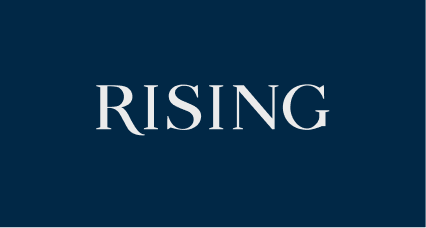
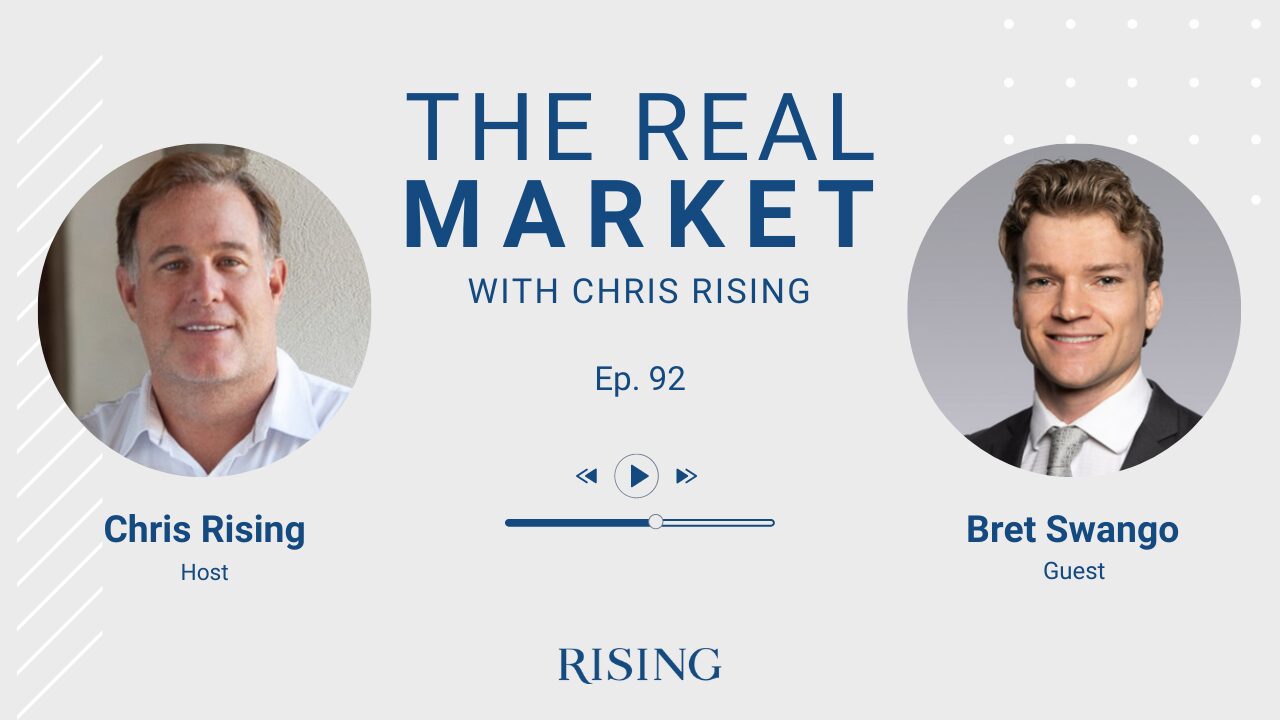
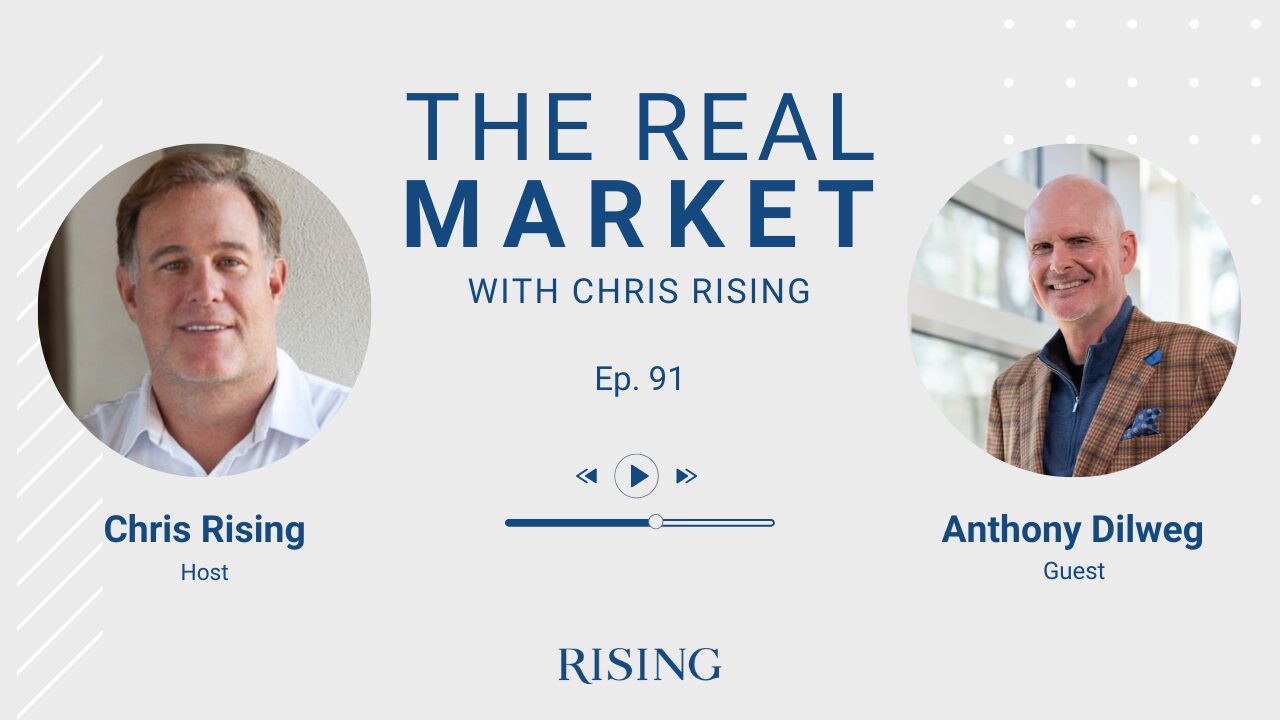
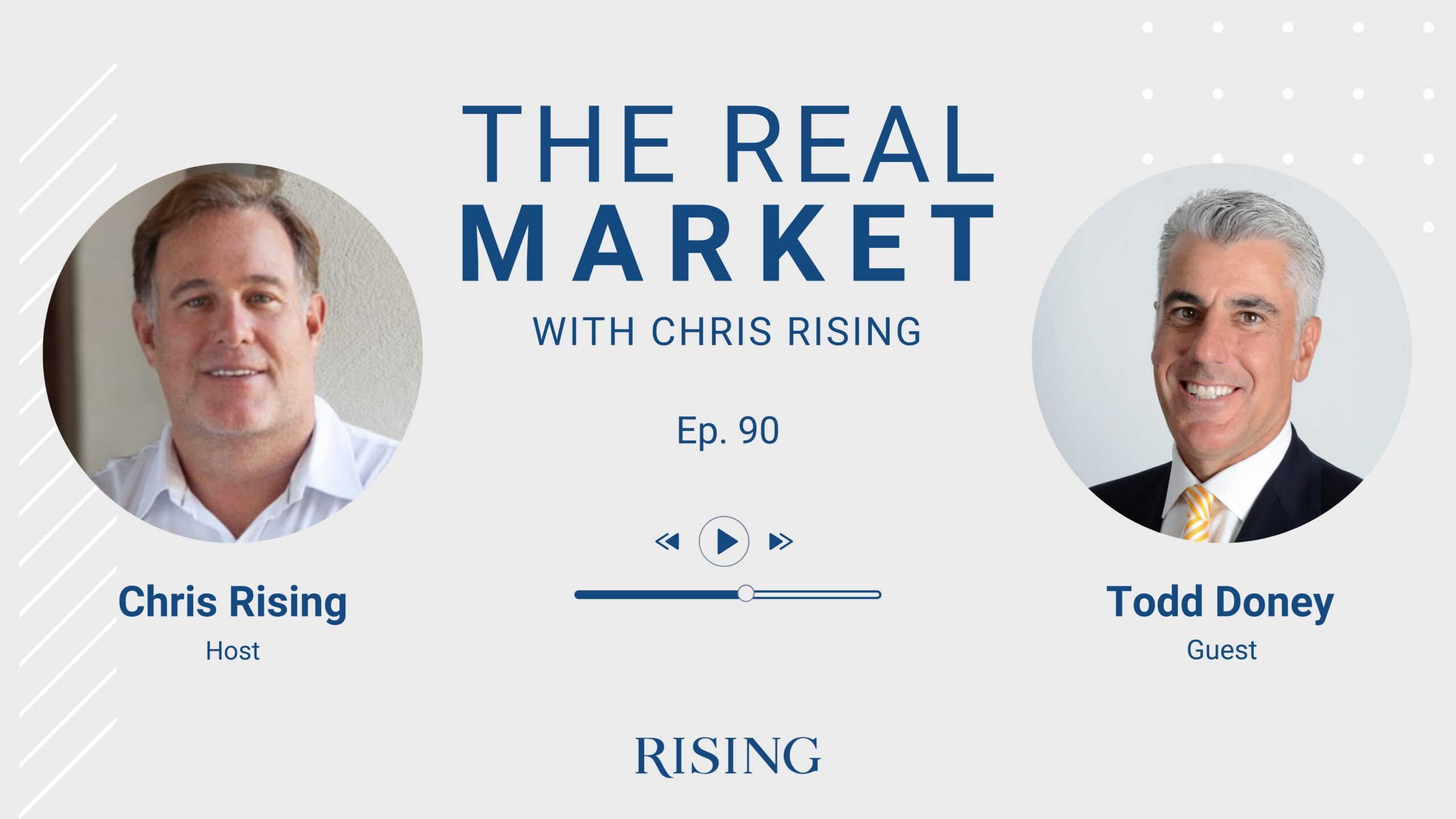
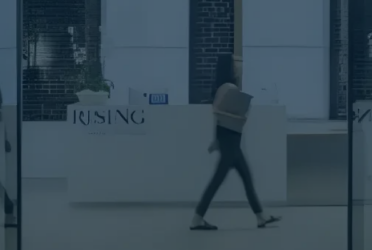
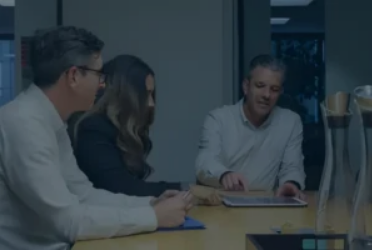
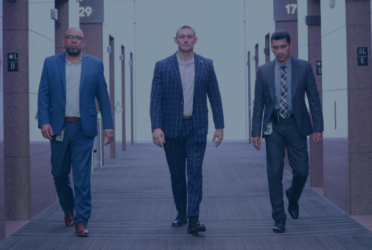
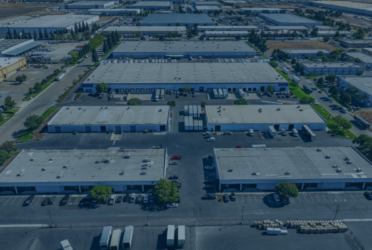
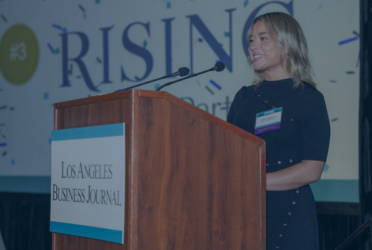

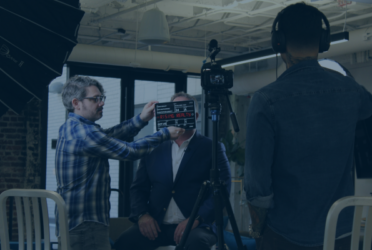
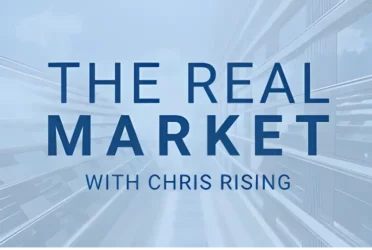 Podcast
Podcast